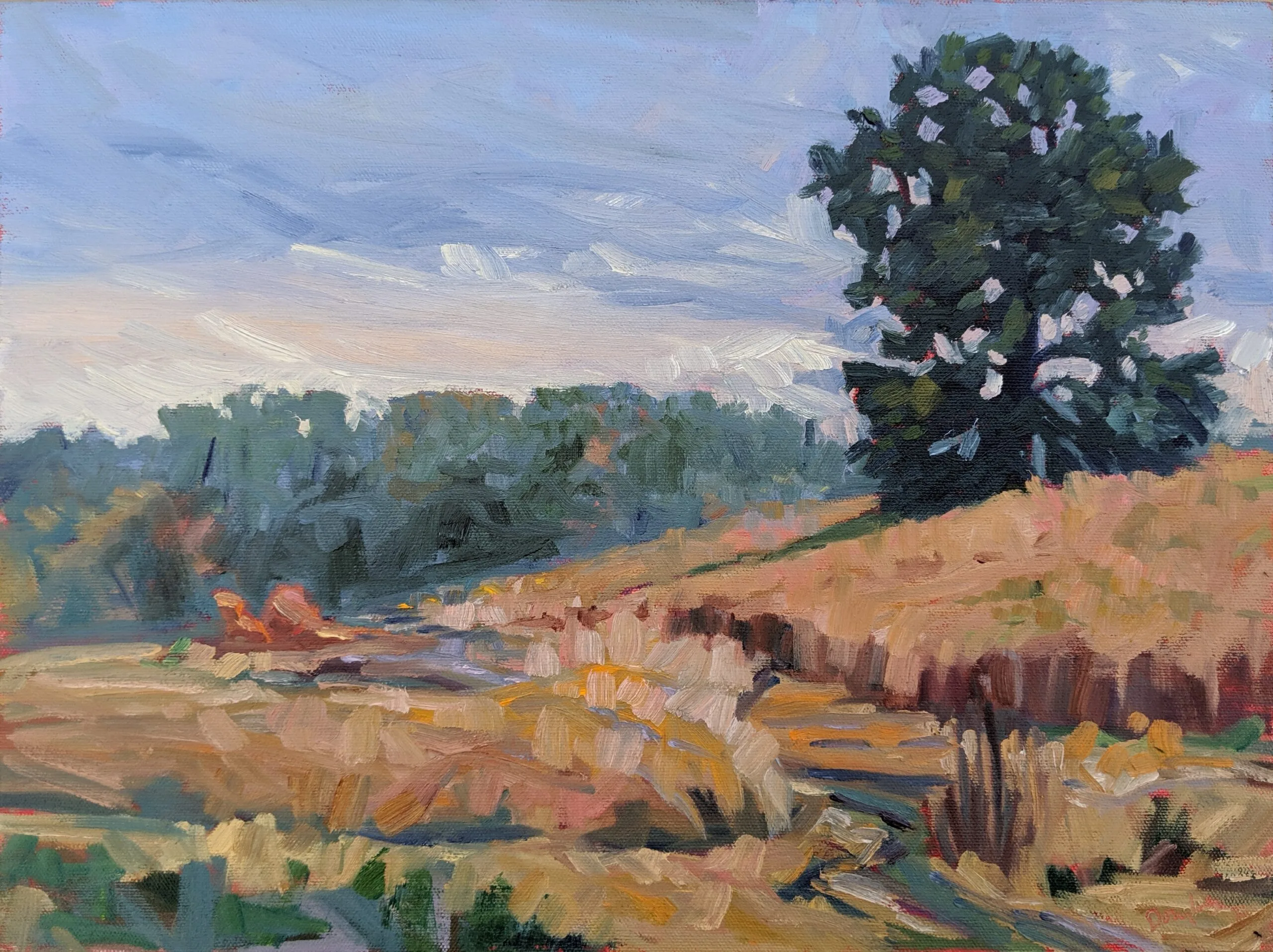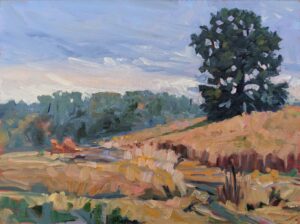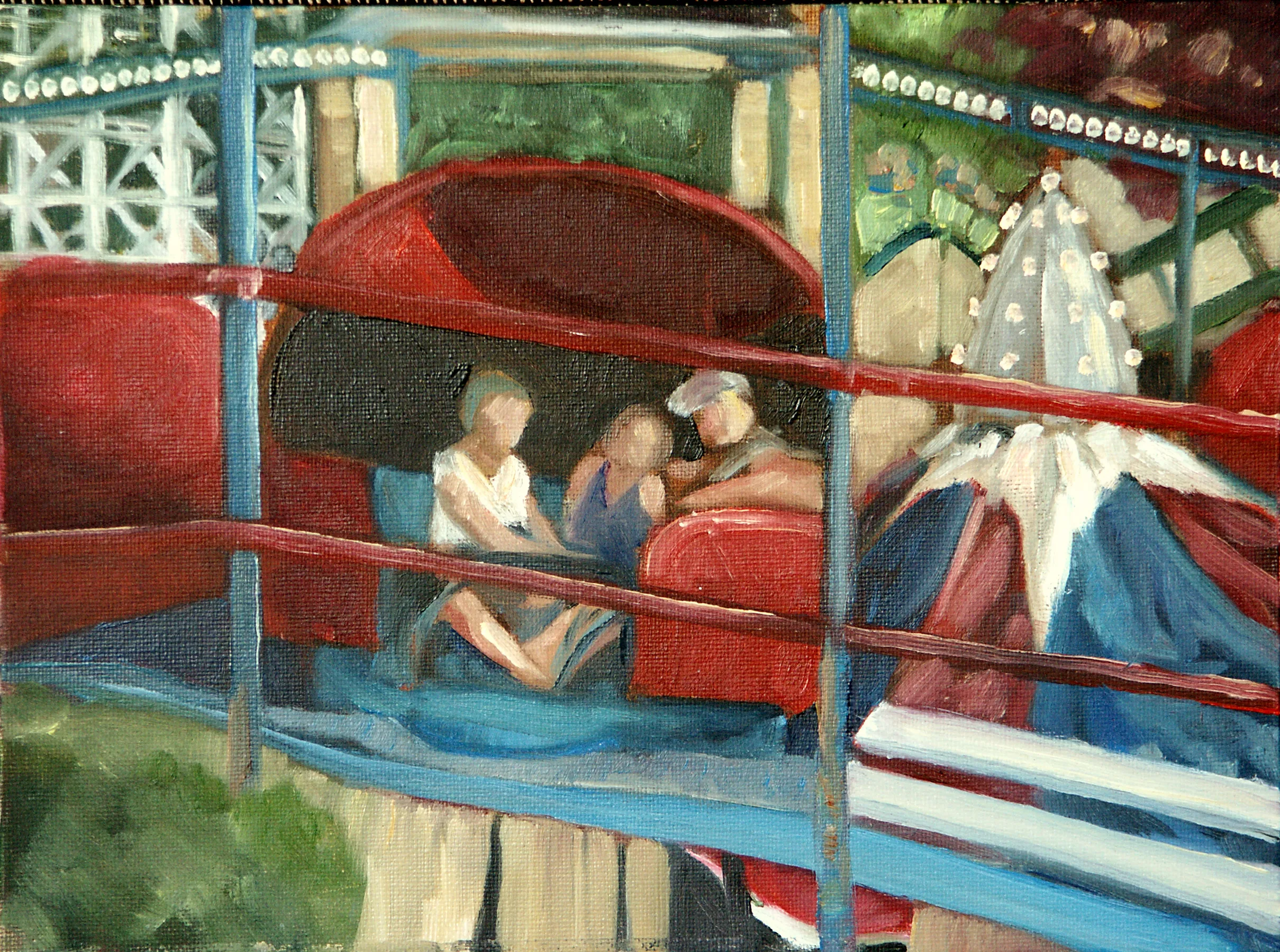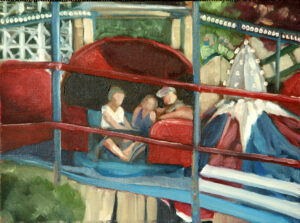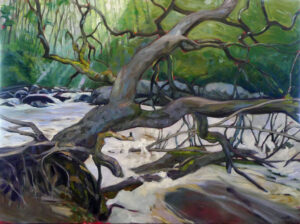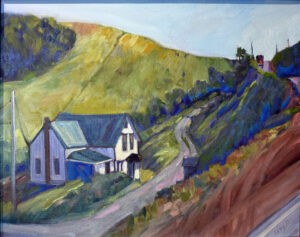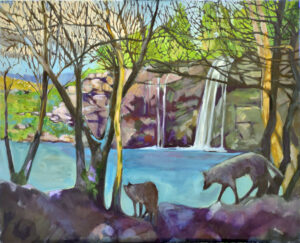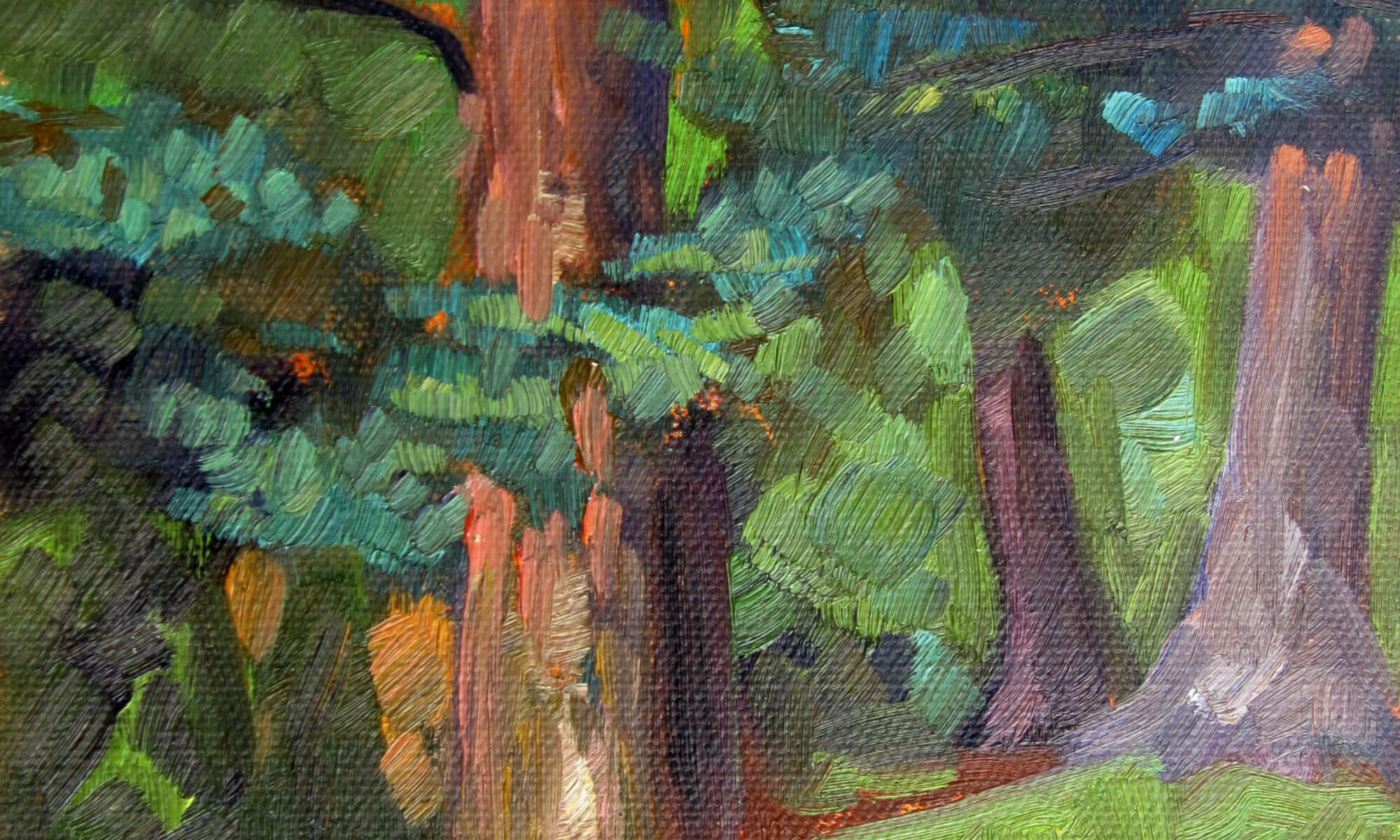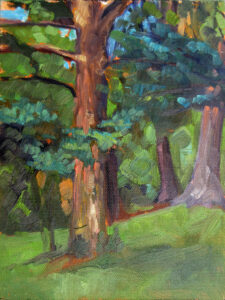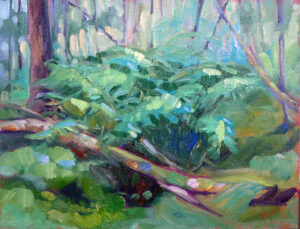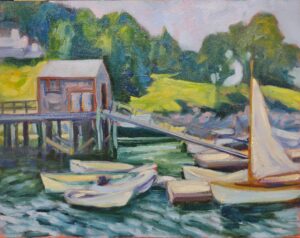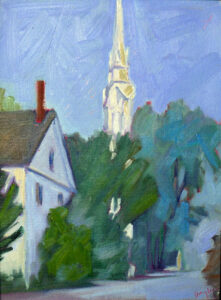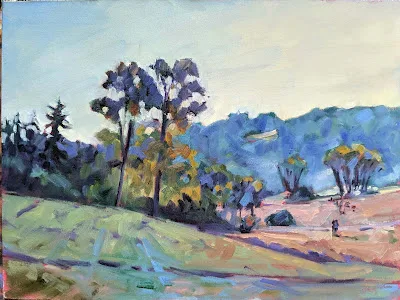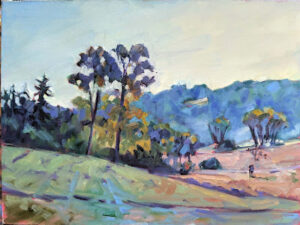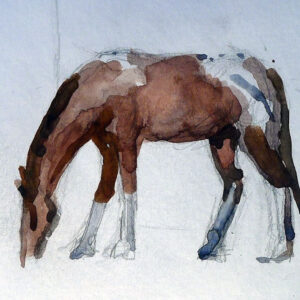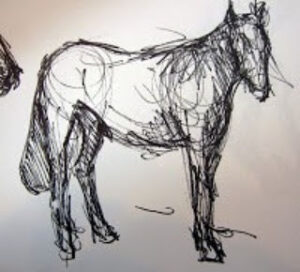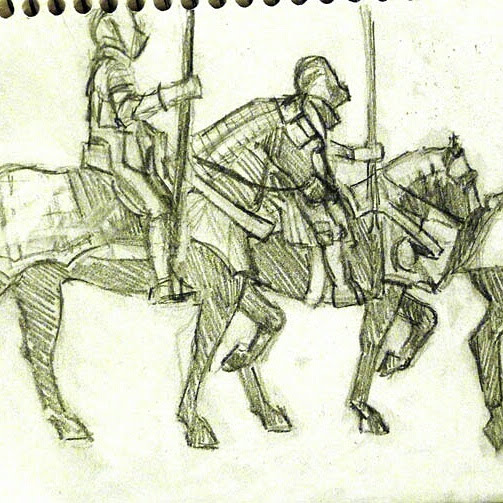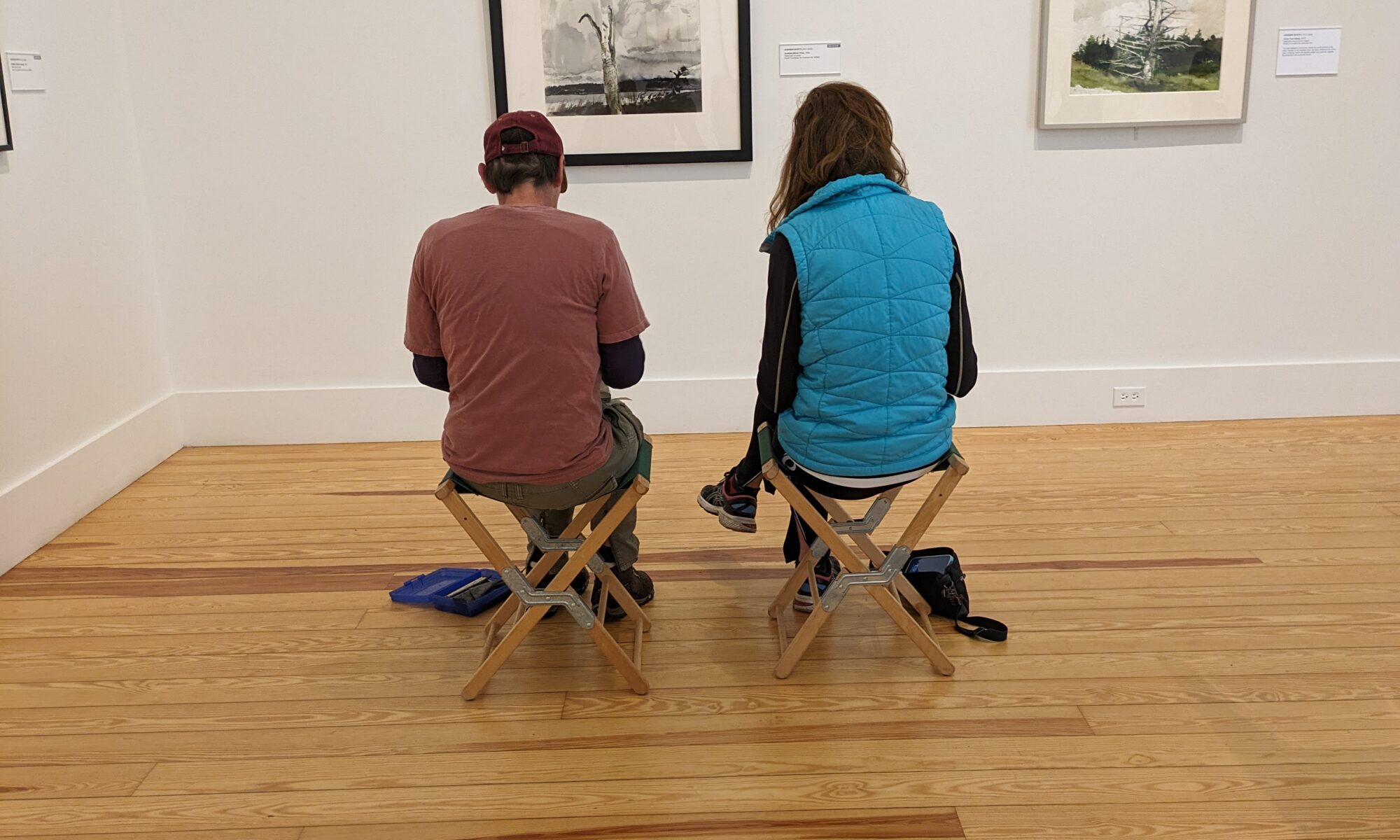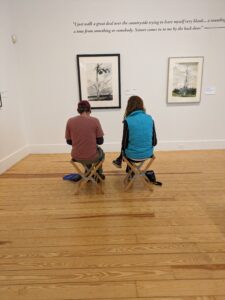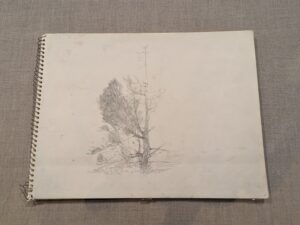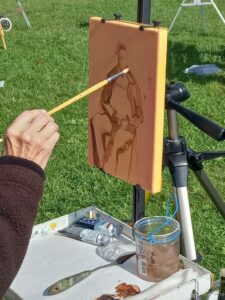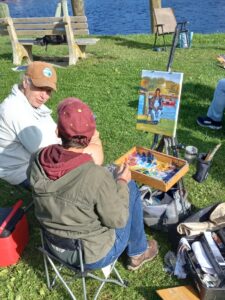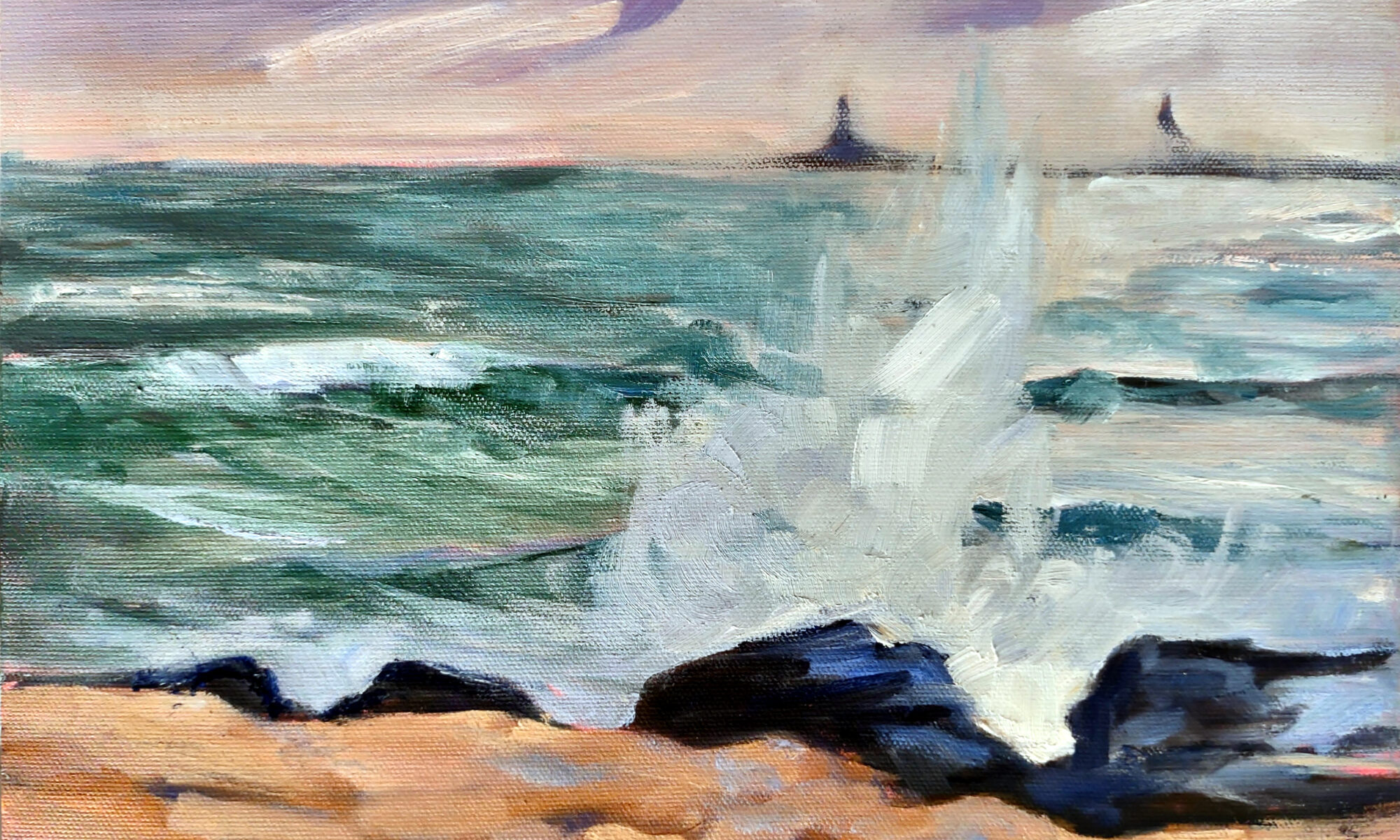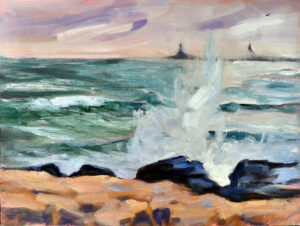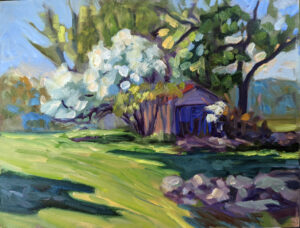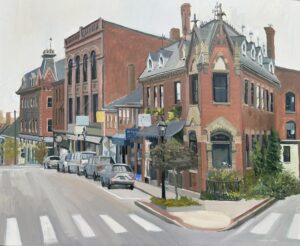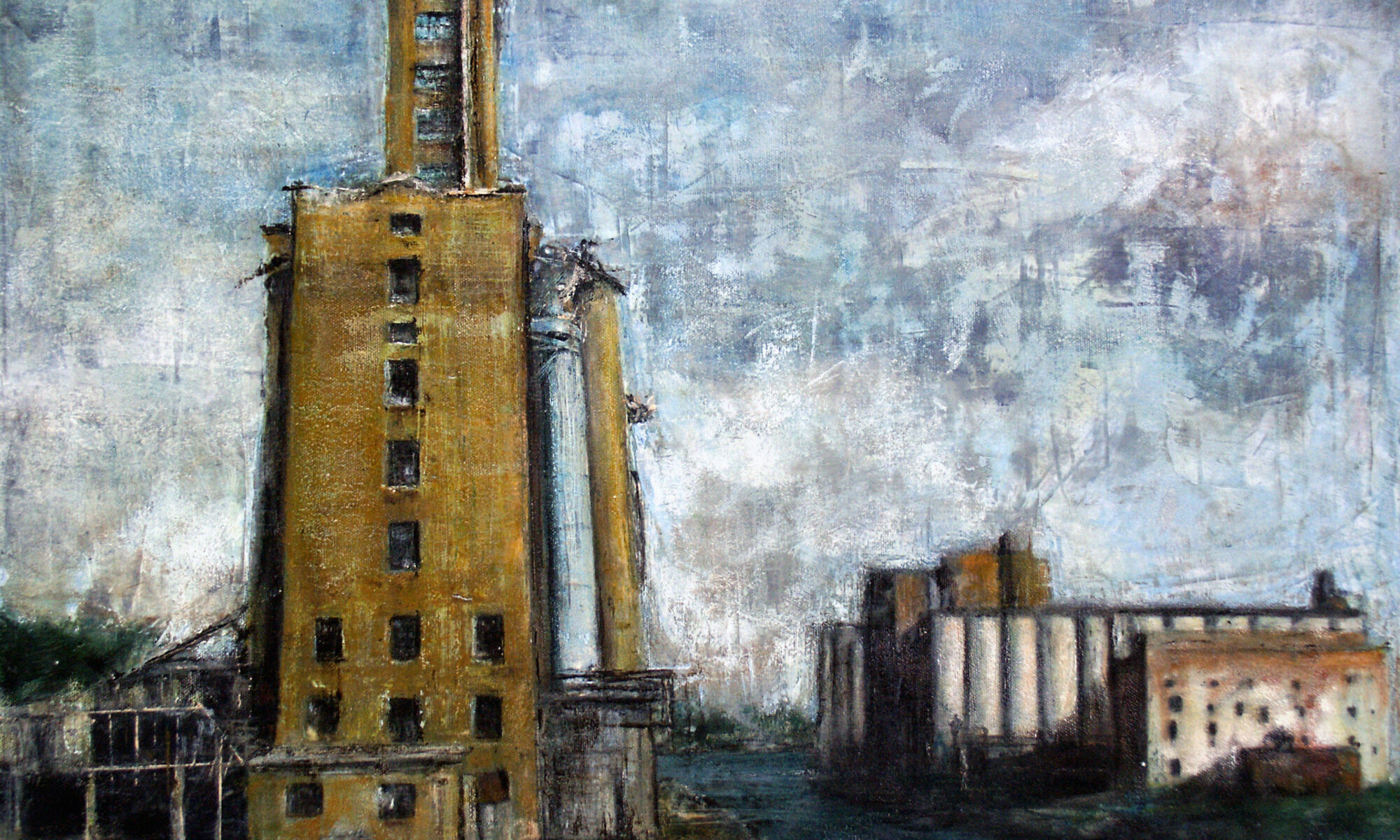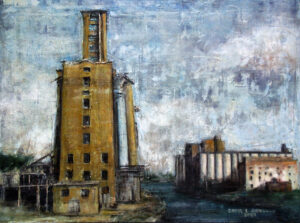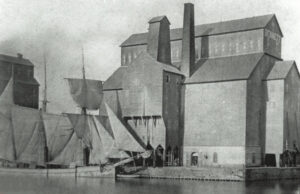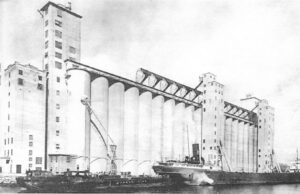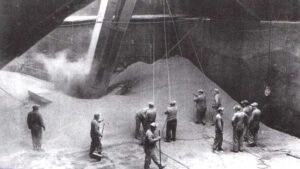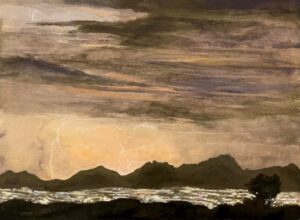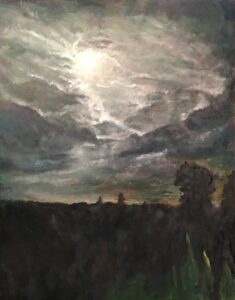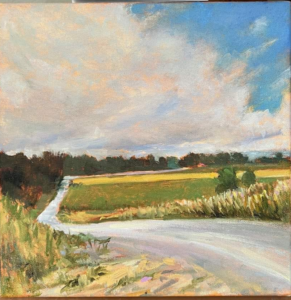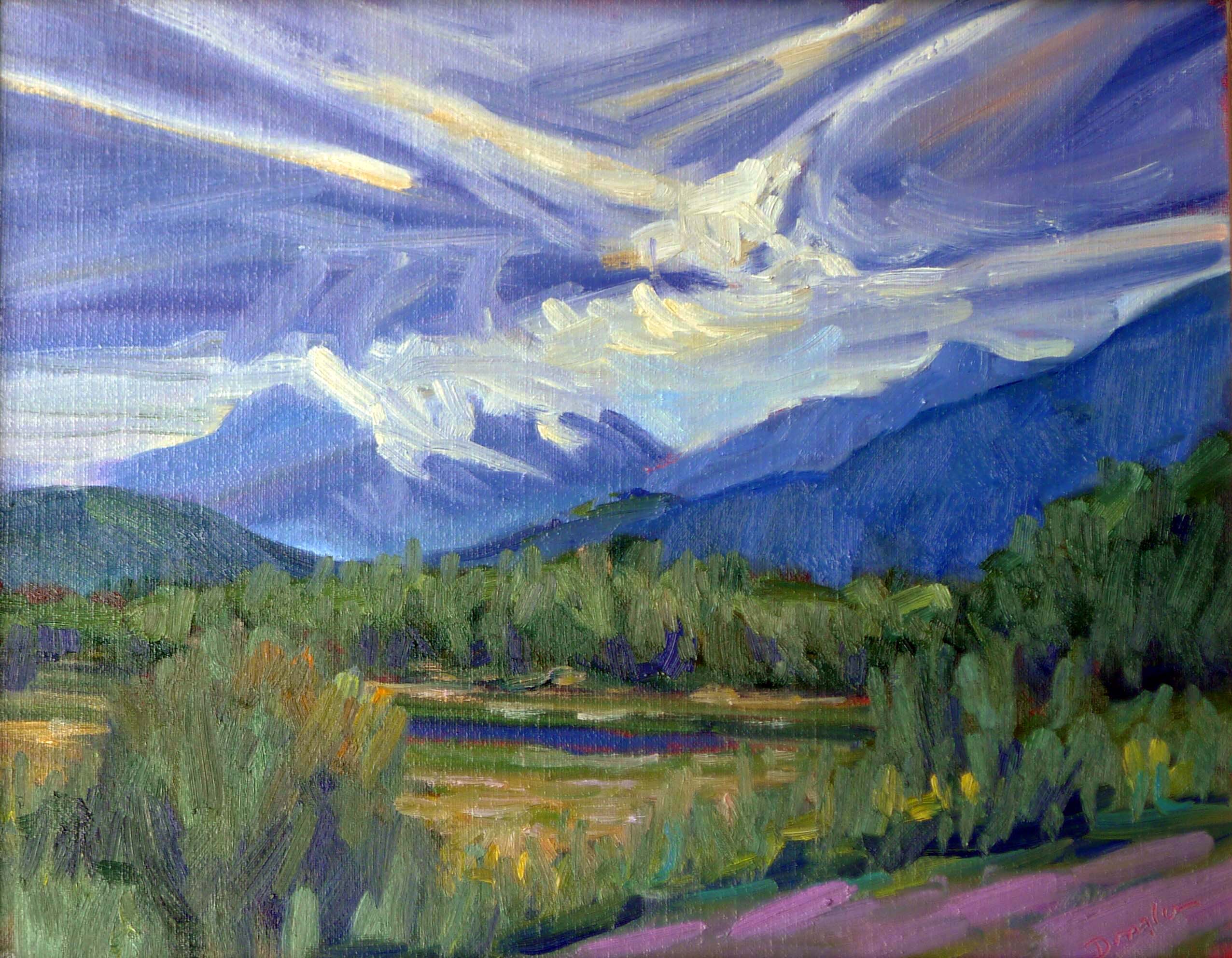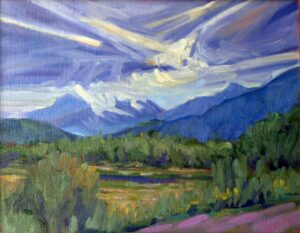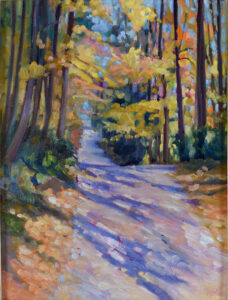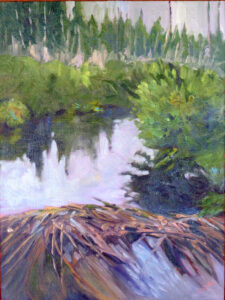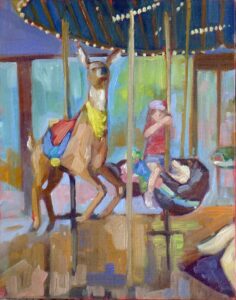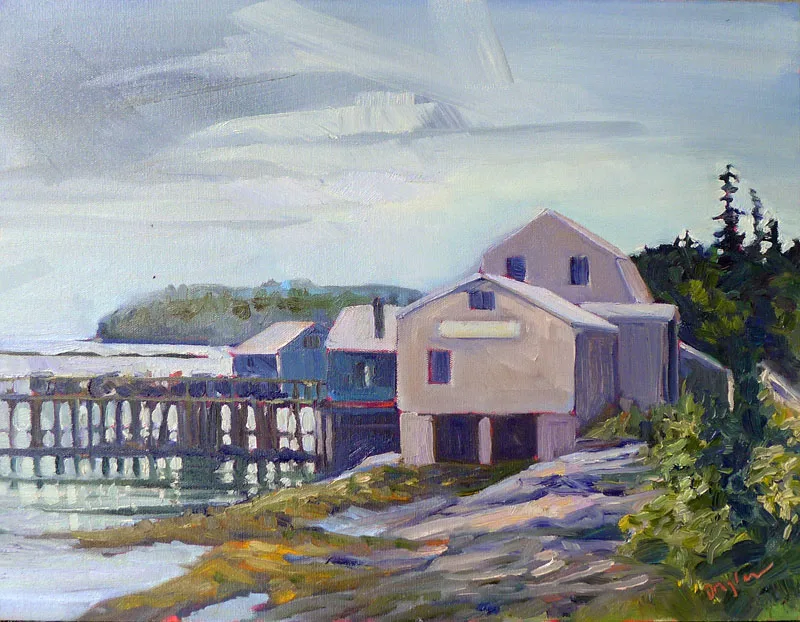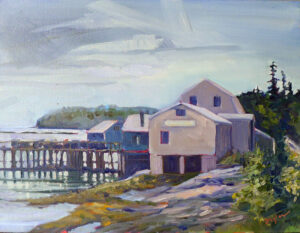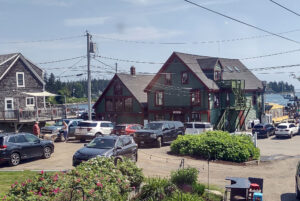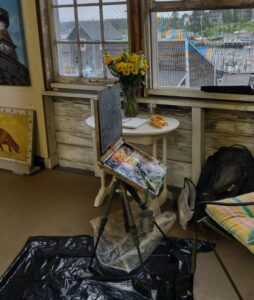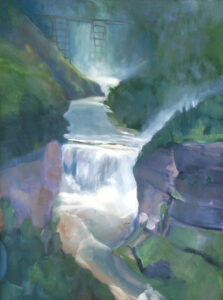Each week until the end of the year I’ll be giving you a behind-the-scenes look at one of my favorite paintings. These are paintings that are available for you to purchase unless otherwise noted.
I painted this fallow field in the late autumn. Torrential rain was forecasted starting at midday, so I took off to paint before dawn. That didn’t help much; pour it did, in that kind of deep soaking rain that only autumn can provide.
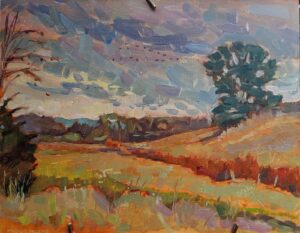
This was an opportunity to test a favorite hypothesis of mine: that location doesn’t matter as much as subject and style. I know painters who jealously guard their ‘special’ painting locations. I’ve always done the opposite. No two painters look at things the same way, and various paintings of the same site will all come out very different.
Kirkwood Preserve is a lovely, rugged patch of fallow fields and old trees, but fearing an imminent washout, we stayed close to our cars. That meant that four of us chose to paint exactly the same view: Nancy Granda, Lisa BurgerLentz, Bobbi Heath, and me.
Four paintings could not be more similar in subject outside a sip-and-paint, and yet they are very different. Even though they’re all roughly the same composition, they each have their own tonal range, level of abstraction, and brush or knife work.
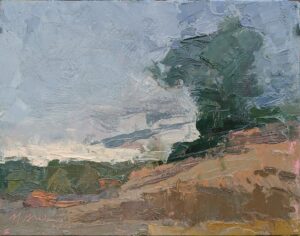
I am again reminded of the Arthur Rubinstein statement that I quoted on Monday: “Nothing in art can be the best. It is only… different.”
I’m in Sedona for the 19th annual Sedona Plein Air Festival I’m conflicted, because as much as I love Sedona, I adore the northeast at this time of year. As I drove south on Wednesday, I was struck once again by the panoply of jewel tones in which nature dresses our landscape this time of year.
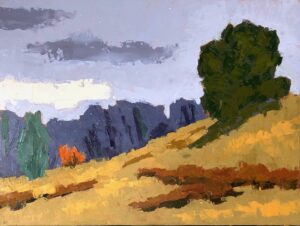
The gold tones of this painting pair perfectly with Autumn Farm, Evening Blues, which I featured last Friday. The execution was nearly as dramatic, as we were painting in sheeting rain.
You can buy this painting by clicking through here. I promise you rain doesn’t come with it.
My 2024 workshops:
- Painting in Paradise: Rockport, ME, July 8-12, 2024.
- Sea & Sky at Schoodic, August 4-9, 2024.
- Find your authentic voice in plein air: Berkshires, August 12-16, 2024.
- Art and Adventure at Sea: Paint Aboard Schooner American Eagle, September 15-19, 2024.
- Immersive In-Person Workshop: Rockport, ME, October 7-11, 2024.

